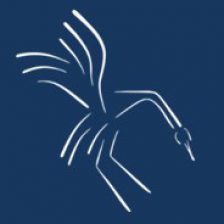Agent-based modeling (ABM), a type of computer simulation that investigates the behaviour of individual people, groups, or objects, might seem difficult to apply to Northern Mesopotamia during the Bronze Age, where many details of daily life remain unknown to us. But CRANE is aiming to do just that with its agent-based modeling project, which uses these models to help understand agricultural decision-making in dry-farming areas of the ancient Near East. CRANE’s work initially grew out of a model developed for the MASS (Modeling Ancient Settlement Systems) Project by the late John Christiansen of the Argonne National Laboratory in Chicago. The current iteration of the model is the work of Dr. Lynn Welton, an Assistant Professor in the Department of Near & Middle Eastern Civilizations at the University of Toronto and a core member of CRANE.
The “agents” in this model are hypothetical people, organized into households; they are created based on the best information available about demographics, fertility and mortality in the period. The model then puts them through a series of actions that simulates the process of planting and growing crops and consuming food, all while introducing the kinds of obstacles that they would have encountered in ancient times. As in the real world, they are “constrained in their ability to complete the tasks by the availability of labour in their household,” Welton explains, “and if a household does not have enough food to support its members, individuals die from lack of nutrition.” By running different simulations based on different variables, and comparing the results to available archaeological data, Welton says that ABM “allows us to outline a range of possibilities and virtually explore possible mechanisms that could have led to the patterns we see archaeologically.”

These models are still in the early stages of development, and are constantly being updated to create more accurate simulations; for example, the current model uses only one crop species, but Welton is working “to allow households to choose between different crops that have different patterns of productivity.” Other CRANE projects will help to inform this one as well. The results of CRANE’s climate modeling project, directed by Richard Peltier, will be used to bring nuance to the ABM project by adding more detailed, accurate climate data to the models. It is also increasingly informed by new research on ancient agriculture; Welton points in particular to Hervé Reculeau, her collaborator at the Oriental Institute of the University of Chicago, whose input is improving the model by creating more accurate knowledge about sowing, plowing, harvesting, and other agricultural processes based on data from ancient textual sources.
Welton adds that the model has already yielded some ideas about what situations populations could and couldn’t survive: for example, it suggests that while households could withstand short-term losses, “crop failures of 3+ consecutive years, which outlast the typical storage life of household grain supplies, result in dramatic population collapse in the model; introducing various coping strategies may help to mitigate this collapse.

”As the models and simulations become more sophisticated and wide-ranging, they’ll be able to test more theories about how people lived. “What we’re doing is trying to systematically test possible scenarios, in order to identify feedbacks between different variables,” Welton explains. “We don’t necessarily always have to know all the details about the past to develop a model that is useful to us.”
Written by Jaime Weinman.
